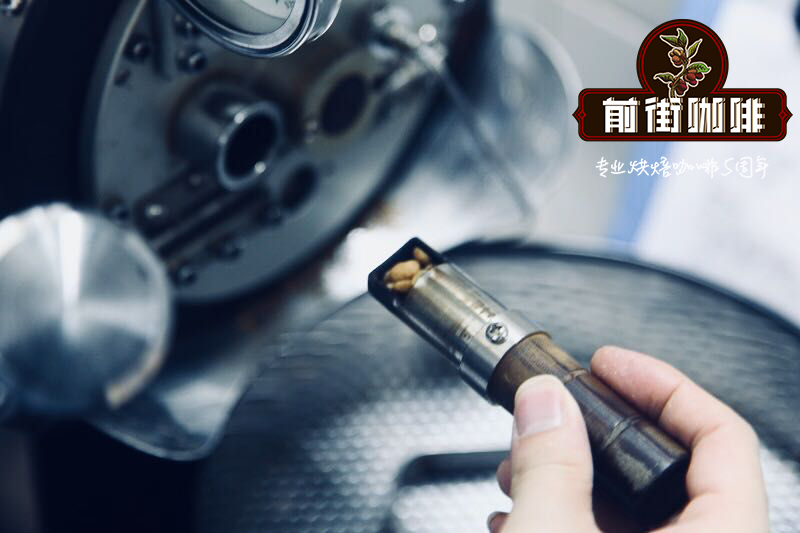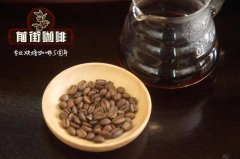What is the speed of coffee roasting?| What happens at different baking stages?

Professional coffee knowledge exchange more coffee bean information please follow the coffee workshop (Wechat official account cafe_style)
Coffee beans turn dark brown after baking, and they also appear a variety of flavors after baking, but in any case, they only know the concept of light, medium and deep. What happens in roasting? What kind of changes will take place at each stage?
Most coffee consumers are confused about the degree of coffee roasting, and only know the vague concepts of shallow, medium and deep. In fact, in the coffee roasting profession, there is a very professional division of coffee roasting degree. The flavor of the same kind of coffee is very different under different roasting degrees. Different raw coffee beans, according to the characteristics of coffee beans, have different coffee roasting degree requirements, some are suitable for shallow roasting degree, some are suitable for deeper roasting degree.
Fast or slow? Shallow or deep?
In short, the roasting of coffee actually refers to how dark the final color of the coffee beans is (light or deep) and how long it takes (quick or slow stir-fry). It is not enough to understate that a certain kind of coffee is lightly roasted, because the coffee may be stir-fried quickly or slowly, different roasting rates will have very different flavor performance, while the color of coffee beans look very similar.
When coffee is roasted, a series of different chemical reactions take place, many of which lead to weight loss and, of course, water loss. Slow frying (roasting in 14 minutes and 20 minutes) will have a higher weightlessness ratio (about 16% to 18%), and fast frying can be completed within 90 seconds at most. For a relatively expensive coffee, slow frying will have better flavor development.
During the roasting process, there are three factors that determine the final flavor of coffee that must be properly controlled: sour, sweet and bitter. In general, the longer the total baking time, the less sour it leaves. On the contrary, the bitter taste becomes stronger with the longer the roasting time, and the deeper the coffee will be bitter.
The development of sweetness is a bell-shaped curve, between the peak of sour and bitter taste, and good coffee roasters know how to make coffee beans reach the highest sweet spot in every roasting degree. But whether you're using a baking method that makes both sour and sweet, or another baking method that makes it extremely sweet but relatively weak, if you're using poor-quality coffee beans, adjusting the roasting method may not help.
Different baking stages
There are many critical stages in roasting, and how fast a serving of coffee beans goes through each stage is commonly known as the baking mode (roast profile). Many bakers write down each baking record carefully so that each baking can be reproduced with a small temperature and time error.
The first stage: removing moisture.
Coffee beans contain 7%-11% moisture, which is evenly distributed in the compact structure of the whole coffee bean. when there is more water, the coffee beans will not turn brown. This is the same as browning food when cooking.
After the coffee beans are poured into the dryer, it takes some time for the coffee beans to absorb enough calories to evaporate the excess water, so a lot of calories are needed at this stage. There was no significant change in the appearance and smell of the coffee beans in the first few minutes.
The second stage: turning yellow
After the excess water is taken out of the coffee beans, the first stage of browning begins. The structure of coffee beans at this stage is still very tight and has aromas similar to Indian rice and toast. Soon, the coffee beans begin to swell, the silver skin on the surface begins to fall off, and the exhaust device of the bean dryer is discharged into the silver skin collection bucket, which will be removed elsewhere to avoid causing a fire.
The first two stages are very important: for example, if the moisture of raw coffee beans is not properly removed, the subsequent baking stage will not be able to achieve uniform baking. Even if the coffee bean looks fine on the outside, it may be undercooked on the inside, and the cooked flavor is very unpleasant, with the bitter taste of the coffee bean surface and the undeveloped sharp sour and grass flavor of the bean core. After this stage, it is difficult to save even if you slow down the baking rate, because different parts of the same bean will develop at different rates.
The third stage: the first explosion
When browning begins to accelerate, coffee beans begin to produce large amounts of gas (mostly carbon dioxide) and water vapor. When the internal pressure increases too much, the coffee beans begin to burst, make a crisp sound, and expand nearly twice as much. From then on, the flavor of coffee as we know it began to develop, and the bean baker could choose when to finish baking.
The bean baker will find that if given the same firepower, the temperature rise will slow down, and if the heat energy is too low, it may cause the baking temperature to stagnate and cause the coffee flavor to be dull.
The fourth stage: flavor development stage
After the first explosion, the coffee bean noodles will look smoother, but there will still be a few wrinkles. This stage determines the final depth of coffee coloring and the actual depth of roasting. The baker has to handle the sour and bitter taste of the final cooked bean product. The longer the coffee is roasted, the higher the bitter taste.
Stage 5: the second explosion
At this stage, the coffee beans burst again, but the sound was more subtle and denser. Once the coffee beans are roasted to the second explosion, the internal oil is more likely to be brought to the bean surface, and most of the sour taste will fade and produce a new flavor, often referred to as "baking flavor". This flavor does not vary according to the type of beans, because it is caused by carbonization or coking rather than internal flavor components.
Roasting coffee beans deeper than the second stage is dangerous and can sometimes lead to fires, especially when using large commercial bean dryers.
In the field of coffee roasting, there are baking depths such as "French roasting" and "Italian roasting", which refer to coffee beans roasted to a very deep depth, with a typical high concentration and high bitterness, but the personality of most beans will disappear. Even though many people like the flavor of heavily roasted coffee, if you want to know the flavor and personality of high-quality coffee from different places, it is recommended not to choose heavily roasted beans.
END
Important Notice :
前街咖啡 FrontStreet Coffee has moved to new addredd:
FrontStreet Coffee Address: 315,Donghua East Road,GuangZhou
Tel:020 38364473
- Prev

Do you know what organic coffee means? what is the difference between organic coffee and plain coffee?
Professional Coffee knowledge Exchange more information about coffee beans Please follow the coffee workshop (Wechat official account cafe_style) organic coffee has more than half the caffeine reduction compared with the usual mode of cultivation. After professional and experienced roasting, there will be less caffeine left, and other active ingredients in coffee will be efficiently preserved. For
- Next

Is coffee organic food? what are the brands of high-quality organic coffee beans?
For more information on coffee beans, please follow the coffee workshop (Wechat official account cafe_style). People's views on organic coffee are very polarized. For those in favor of organic coffee, organic production is more helpful to the environment. For those who are against organic, it may be mentioned that organic planting is inefficient and the certification process is expensive, as well as chemical residues in the baking process.
Related
- Beginners will see the "Coffee pull flower" guide!
- What is the difference between ice blog purified milk and ordinary milk coffee?
- Why is the Philippines the largest producer of crops in Liberia?
- For coffee extraction, should the fine powder be retained?
- How does extracted espresso fill pressed powder? How much strength does it take to press the powder?
- How to make jasmine cold extract coffee? Is the jasmine + latte good?
- Will this little toy really make the coffee taste better? How does Lily Drip affect coffee extraction?
- Will the action of slapping the filter cup also affect coffee extraction?
- What's the difference between powder-to-water ratio and powder-to-liquid ratio?
- What is the Ethiopian local species? What does it have to do with Heirloom native species?

